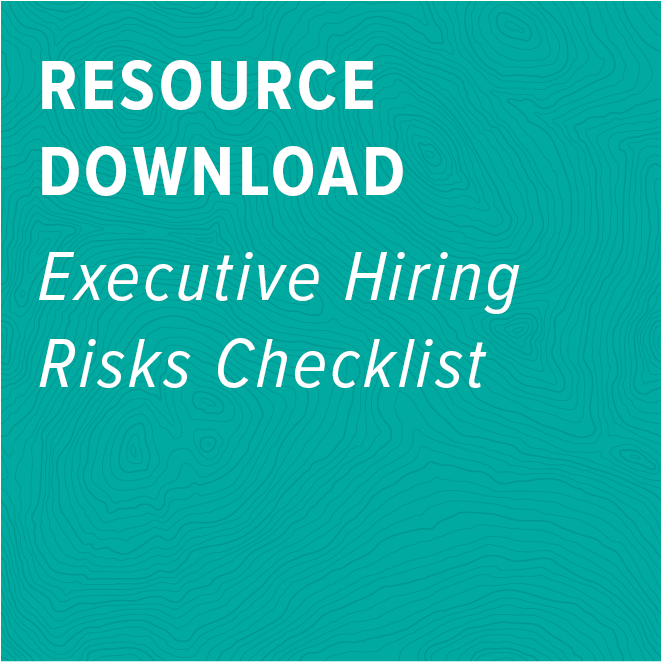
Keep Ahead of the Hiring Gator Jaw with These Three Steps
A while back, Highline helped a globally-relevant outdoor brand recruit a brand manager to convey their spirit to the world and promote epic products. Sounds like a dream job for an up-and-coming rockstar talent, right? Well, it ended up being, for the right person we eventually found. But to find them, we had to talk to three times as many people as we normally do…and ended up with half the number of candidates. This isn’t any one person’s fault, and certainly not the fault of job seekers—it’s just the gator jaw. The most interesting jobs and the most talented candidates can both get swallowed up by it.
What I call “the gator jaw” is the gap between people who need jobs and businesses who need people. Right now, this gap is huge, and it’s the most in-favor of the candidate it’s been for a while. US unemployment is the lowest it’s been in 20 years. For job seekers, this means leverage, which is new. Businesses have to do more than ever to attract top candidates, especially for high-impact executive roles. But what does “doing more” actually mean?
First Off, Respect the Skills
Most jobs today don’t merely “require” average-or-better interpersonal, communication, and management skills as items on a bulleted list, but rely on them. Employment in roles requiring these three skills has increased 83% since 1980. I’ve learned over the years of recruiting to ask strategic questions that help assess the depth of these qualities, and also their balance, since every role is best filled by different strengths. In the outdoor and adventure industry, like other retailers, a trifecta of social, analytical, and physical skills may be required. Put bluntly, these are the toughest candidates to attract. And when I say that, I don’t mean attract to the point of an offer letter and a start date. These days, just getting someone to show up for a first interview can be more questionable than you might imagine. So don’t take any of your candidates for granted.
Next, Don’t Hide Your Interest
Today, many businesses are reporting anywhere from 20-50% of candidates don’t even show up for the first job interview. This is called “ghosting” and some people are even doing it to their existing jobs. In a market full of opportunity, it’s on to the next one quickly. But with an executive search especially all this does is make the process longer and more stressful. The companies today doing the best job at overcoming this issue are doing it through complete transparency.
My partner at Highline, Mike, got to be a fly on the wall while an executive at a multi-million-dollar company conducted an interview with a candidate. You know the first question the leader of that big important company asked? “What can we do to get you to work here?” Of course, this was a late-stage interview. But the principle is basic and can be applied to different degrees throughout a hiring process. Showing your interest in an executive candidate might mean something as traditional as flying them out the night before the interview, offering them nice accommodations, or setting up a lunch meet-and-greet with some of their peers before or after the interview. Or, it could be as complex as discussing continuing education options, relocation details, and their personal perspective right out the gate.
Last, Sell the Opportunity You Represent
In this market full of options, top candidates are looking for a sign that one of their opportunities is the right one. And no, it’s not a dollar sign. For many of these individuals, I’ve learned even a hefty salary and benefits package might not be enough to close the deal. In some part, this is due to wage stagnation. When you realize that $4 in 1973 had the same purchasing power as $23 today, it’s obvious for all that while wages have grown, they haven’t kept up with need. You might think this means young job-seekers are chasing the top dollar, but it actually means they’re looking for development opportunities, a sense of purpose, and a company that cares about their futures. Later on in that interview Mike got to sit through, the executive asked another good question: “In your current role, what’s one reason you might not go out to lunch with your peers?” This question achieves many things, reflecting the culture of the hiring company at the same time it shows interest in the candidate’s needs. It’s a question that sells an opportunity for change. Setting up peer luncheons, offering tours, and having candid conversations are just a few more ways you can engage candidates and show them what makes your opportunity a great one.
The idea of having to sell a job opening to a potential candidate might seem totally backwards to more traditionally-minded people. But the companies that fail to make this pivot are the ones that are losing top talent and settling for their third or fourth choice candidates every time. It’s important for hiring managers to stop thinking of an executive search as a competition between applicants to qualify for your job, and start thinking about it as a race with your competitors to get the attention of talent. Otherwise, you’re going to lose when you don’t even know you’re running.
[su_row][su_column size=”1/2″ center=”no” class=””] [/su_column] [su_column size=”1/2″ center=”no” class=””]
[/su_column] [su_column size=”1/2″ center=”no” class=””]
Executive Hiring Risks Checklist
What are you doing to make sure you land your #1 candidate with each hire? Attracting executive candidates is a process rife with risk—if you don't know how to head that risk off ahead of time. Download our Executive Hiring Risks Checklist to take control of your hiring process and secure your top choice every time.